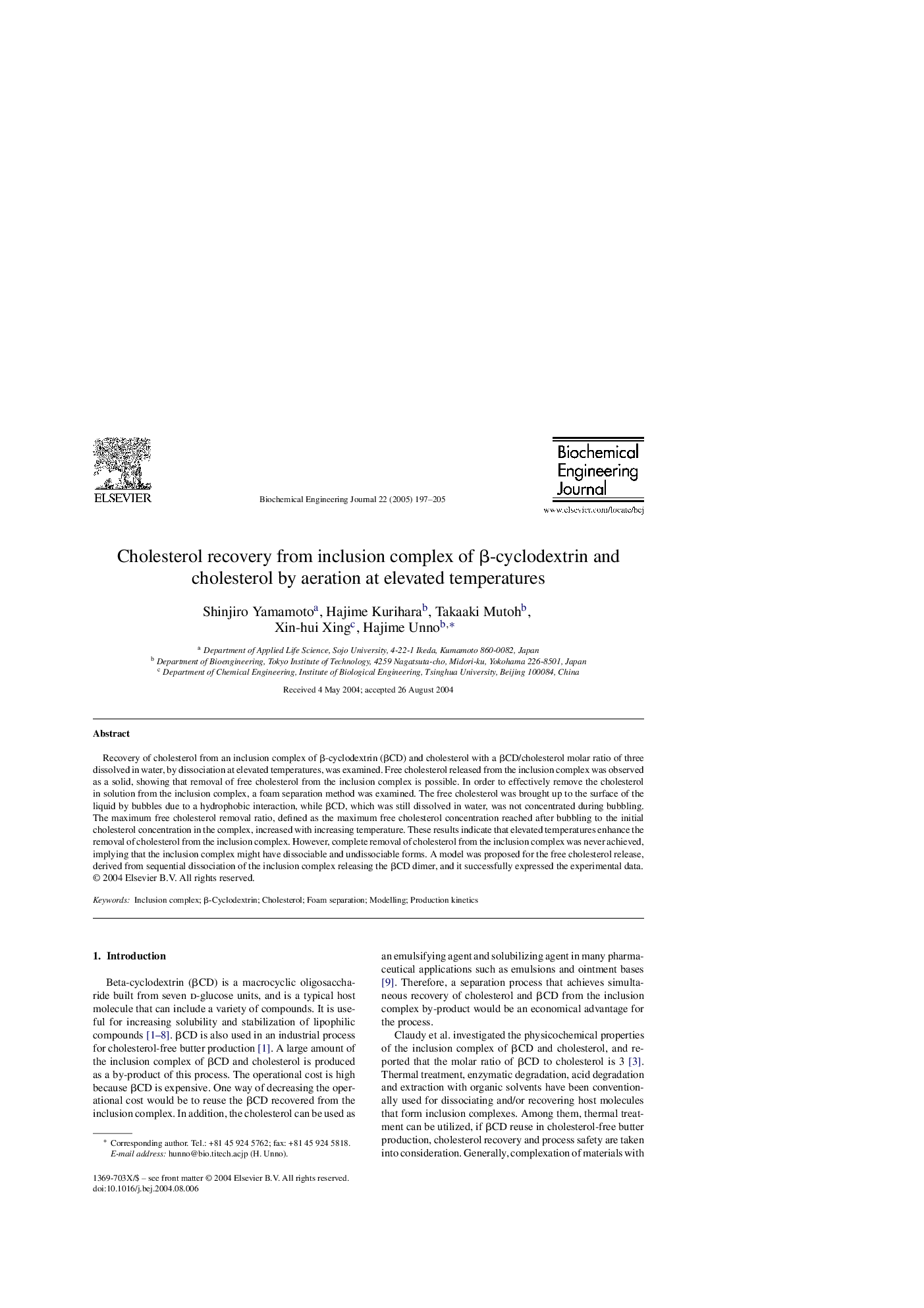| Article ID | Journal | Published Year | Pages | File Type |
|---|---|---|---|---|
| 10160904 | Biochemical Engineering Journal | 2005 | 9 Pages |
Abstract
Recovery of cholesterol from an inclusion complex of β-cyclodextrin (βCD) and cholesterol with a βCD/cholesterol molar ratio of three dissolved in water, by dissociation at elevated temperatures, was examined. Free cholesterol released from the inclusion complex was observed as a solid, showing that removal of free cholesterol from the inclusion complex is possible. In order to effectively remove the cholesterol in solution from the inclusion complex, a foam separation method was examined. The free cholesterol was brought up to the surface of the liquid by bubbles due to a hydrophobic interaction, while βCD, which was still dissolved in water, was not concentrated during bubbling. The maximum free cholesterol removal ratio, defined as the maximum free cholesterol concentration reached after bubbling to the initial cholesterol concentration in the complex, increased with increasing temperature. These results indicate that elevated temperatures enhance the removal of cholesterol from the inclusion complex. However, complete removal of cholesterol from the inclusion complex was never achieved, implying that the inclusion complex might have dissociable and undissociable forms. A model was proposed for the free cholesterol release, derived from sequential dissociation of the inclusion complex releasing the βCD dimer, and it successfully expressed the experimental data.
Related Topics
Physical Sciences and Engineering
Chemical Engineering
Bioengineering
Authors
Shinjiro Yamamoto, Hajime Kurihara, Takaaki Mutoh, Xin-hui Xing, Hajime Unno,
